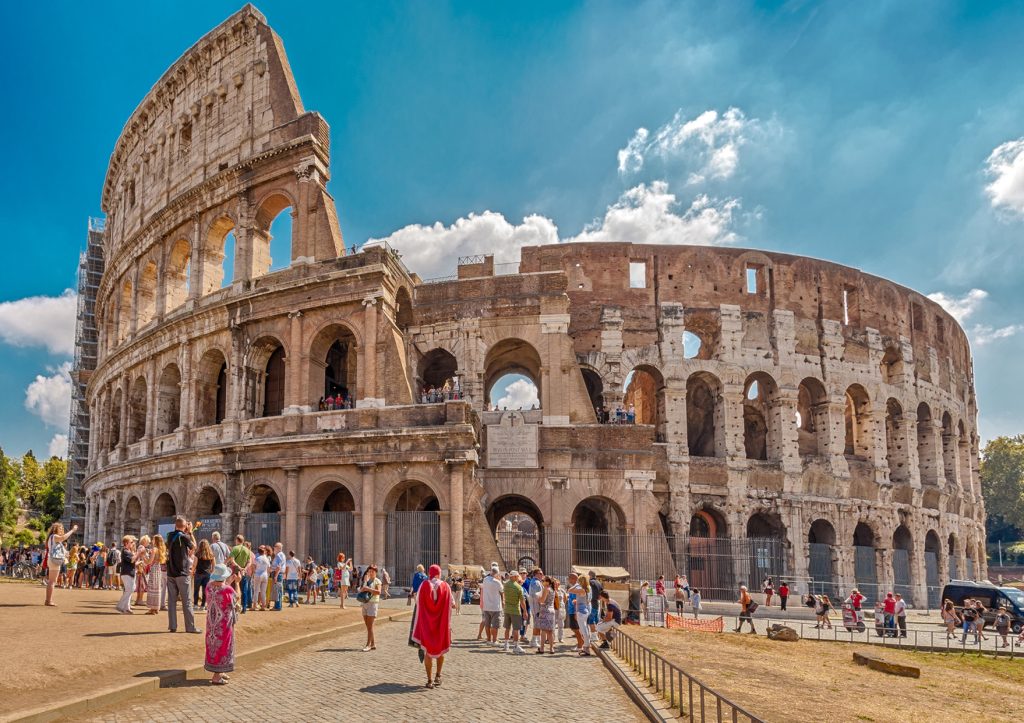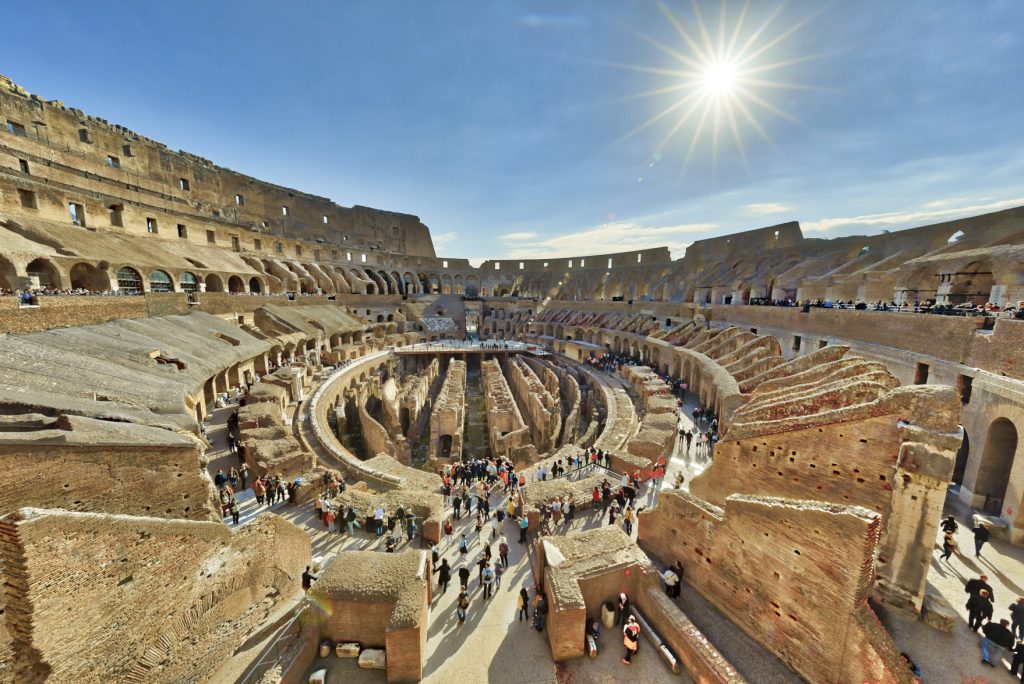The Colosseum, or Flavian Amphitheatre, is the largest structure left to us by Roman antiquity, and has provided the model for sports arenas right down to modern times: the football stadia of the present day have basically the same form as this monument created by the architects of the Flavian Emperors, Vespasian and Titus. The object of the Emperors in raising the Colosseum was to satisfy the appetite of the Roman populace for circenses (games), and there is no doubt that they achieved their aim.
A bronze cross in the arena commemorates the Christian martyrs who were believed to have died here during the Roman Imperial period. There is some doubt, however, whether large numbers of Christians in fact met their death in the Colosseum. The structure of the Colosseum is so well preserved that it still creates a powerful impression of its original form, but it bears very evident marks of the damage and destruction it has suffered down the centuries – by fire, earthquake, neglect and dilapidation under the Christian Empire (when the games were abandoned), its conversion into a fortress of the Frangipane family, the pillaging of its marble, travertine and brick for the construction of palaces and the constant thunder of modern traffic.

The building of the Colosseum was begun by Vespasian in ad. 72 on the site of a colossal statue of Nero (hence the name Colosseum) which stood within the precincts of Nero’s Domus Aurea . Vespasian’s son Titus enlarged the structure by adding the fourth storey, and it was inaugurated in the year 80 with a series of splendid games.
A great variety of materials were used to build the Colosseum: travertine, the calcareous stone from the area around Tivoli, to line the for the concentric rings which supported the cavea; tufa, or soft volcanic rock, for the foundation and the radial walls; concrete to line the vaults of the galleries and arches; marble for the splendid finish, the capitals, the statues and the seats of the sections in the first rows; finally, an infinite number of bricks for non-structural walls and the screens rebuilt by Domitian. It was used by gladiators to wash themselves.

The Colosseum was oval in form (though it appears to be almost circular), 186 m (610 ft) long by 156 m (510 ft) across, with an arena 78 by 46 m (260 by 1 50 ft) which could be used for theatrical performances, festivals, circus shows or games. It stood 57 m (190 ft) high and could accommodate some 50,000 spectators -the Imperial court and high officials on the lowest level, the aristocratic families of Rome on the second level, the populace on the third and fourth. Around the exterior, built of travertine, are pilasters – of the Doric order on the ground floor, Ionic on the next tier and Corinthian on thethird.
The interior structure was contrived with immense skill, the rows of seating and the internal passages and staircases being arranged so as to allow the 50.000 spectators to get to their places or leave the theatre within a few minutes. On the top storey there were originally 240 masts set round the walls to support an awning over the audience. Unfortunately the sumptuous decoration of the interior has been totally destroyed.
Underneath the arena were changing rooms and training rooms for gladiators, cages for wild beasts and store-rooms, the walls of which are now visible since the collapse of the arena floor. Today you can visit these rooms with a professional tour guide by booking a Colosseum underground tour.
Today the Colosseum is located in the heart of Rome, along with the Roman Forum and Palatine Hill, and you can visit all of these important sites with a professional tour guide. There are hundreds of Colosseum tours organized by professional tour guides. We recommend that you allocate at least 1 full day for the Colosseum and Roman Forum on your visit to Rome and take a guided tour.

